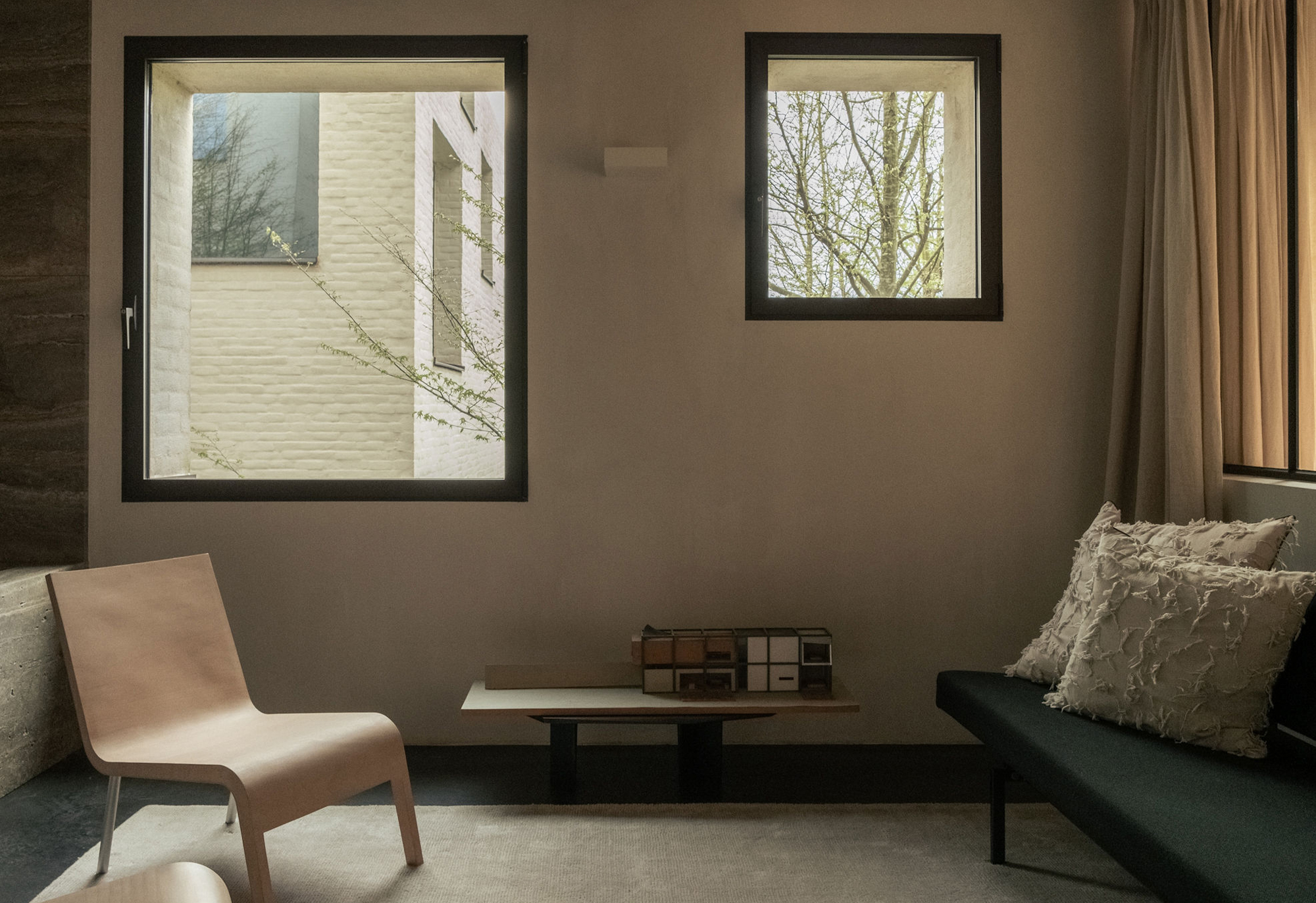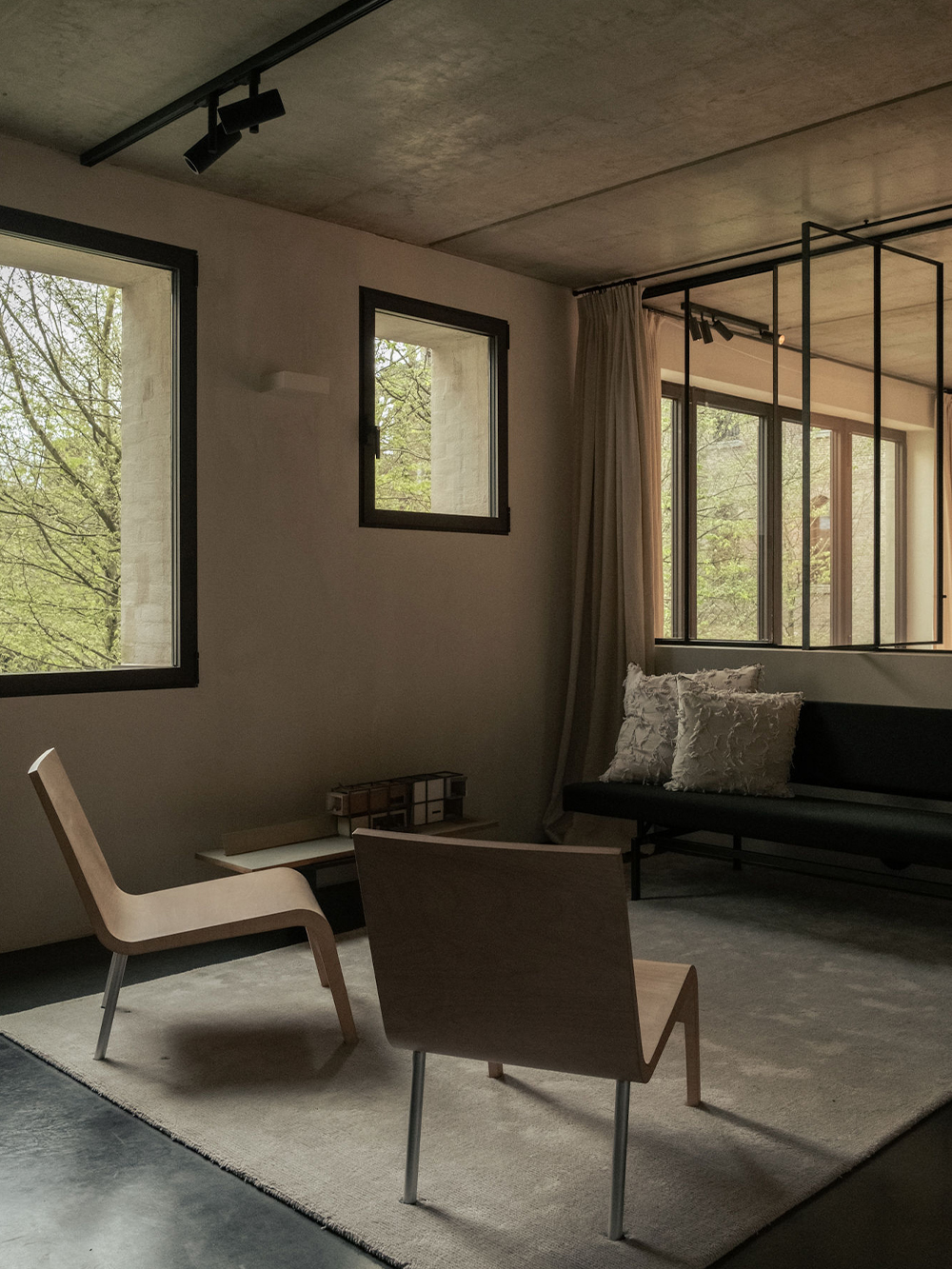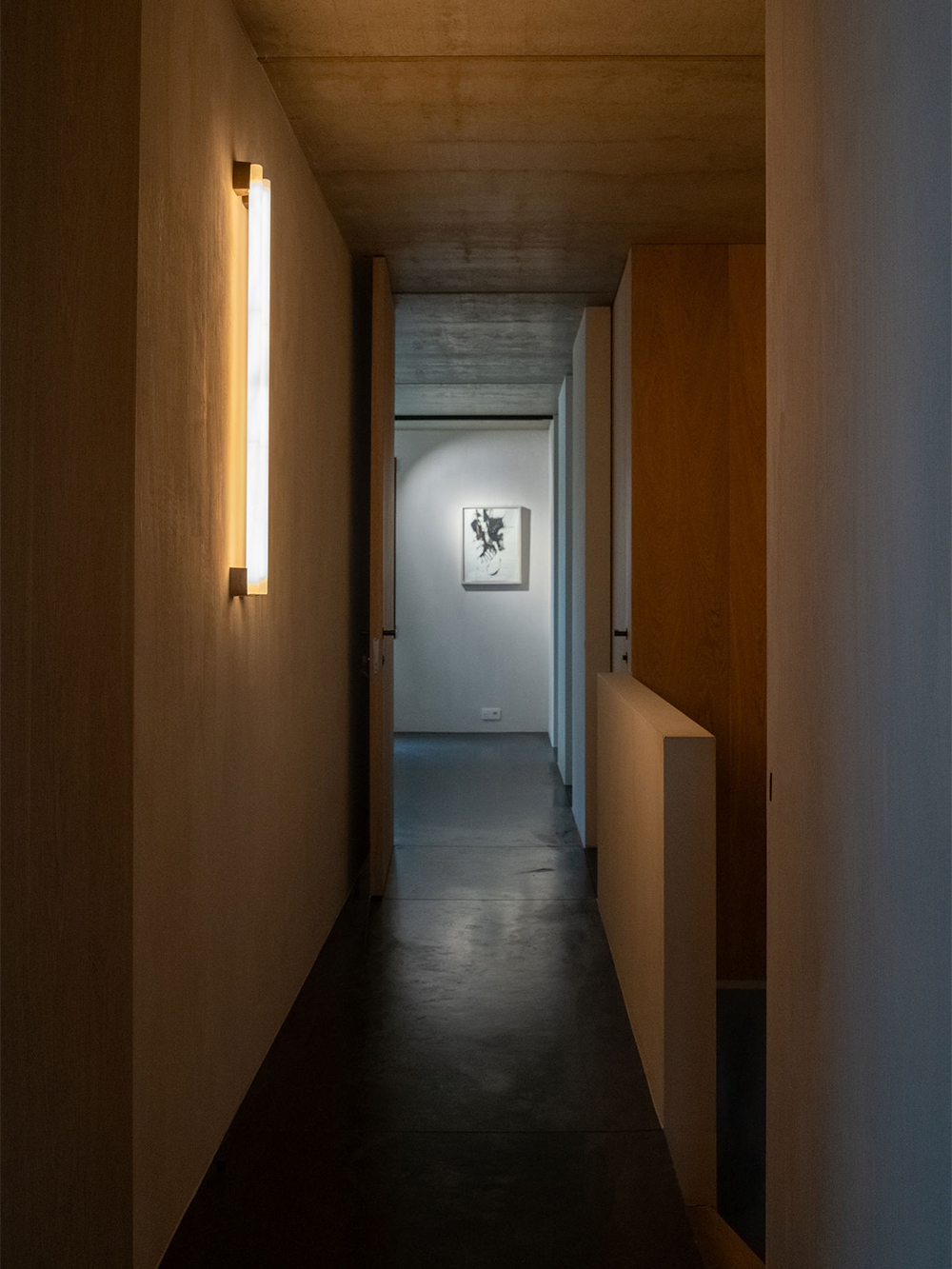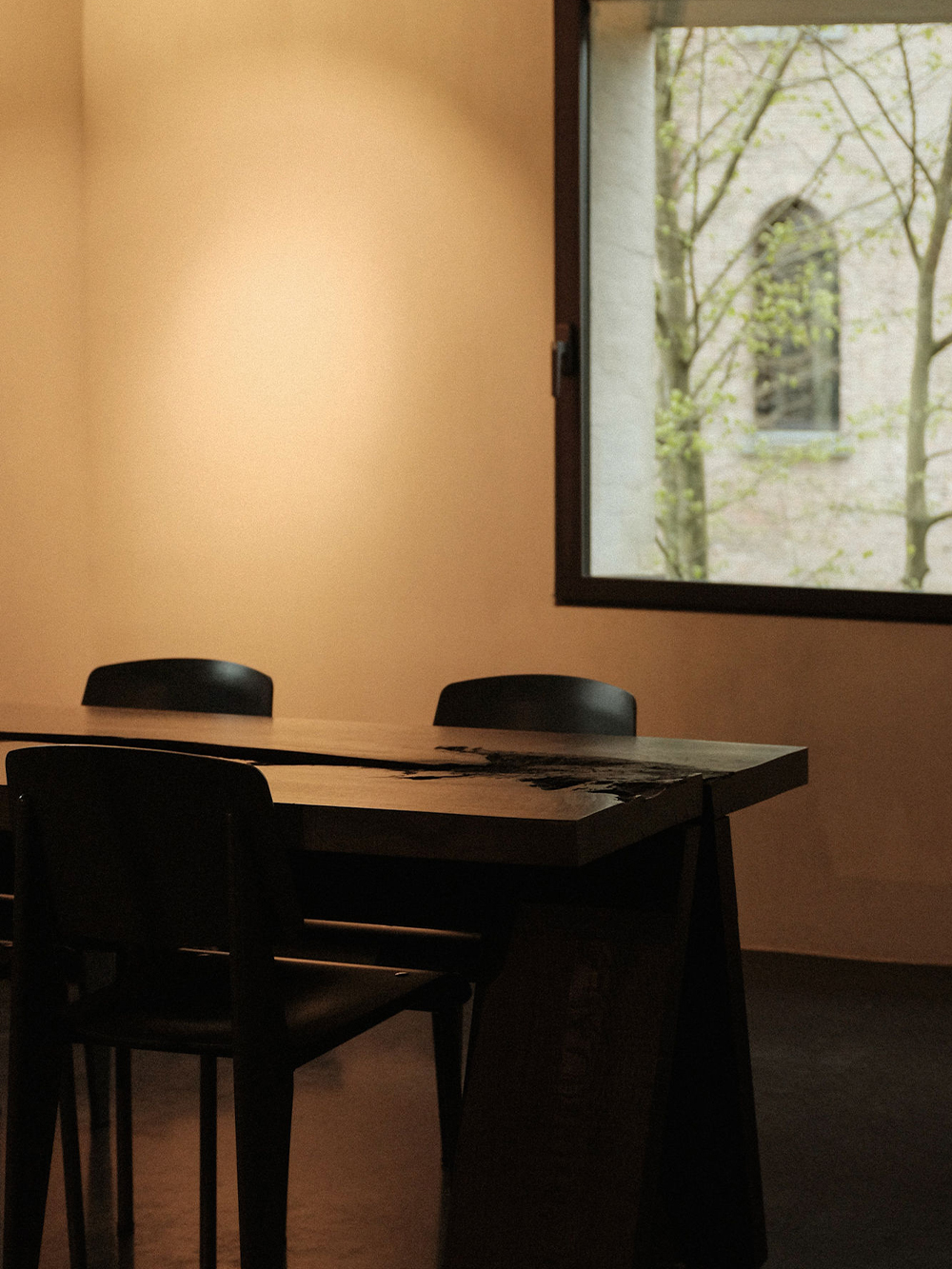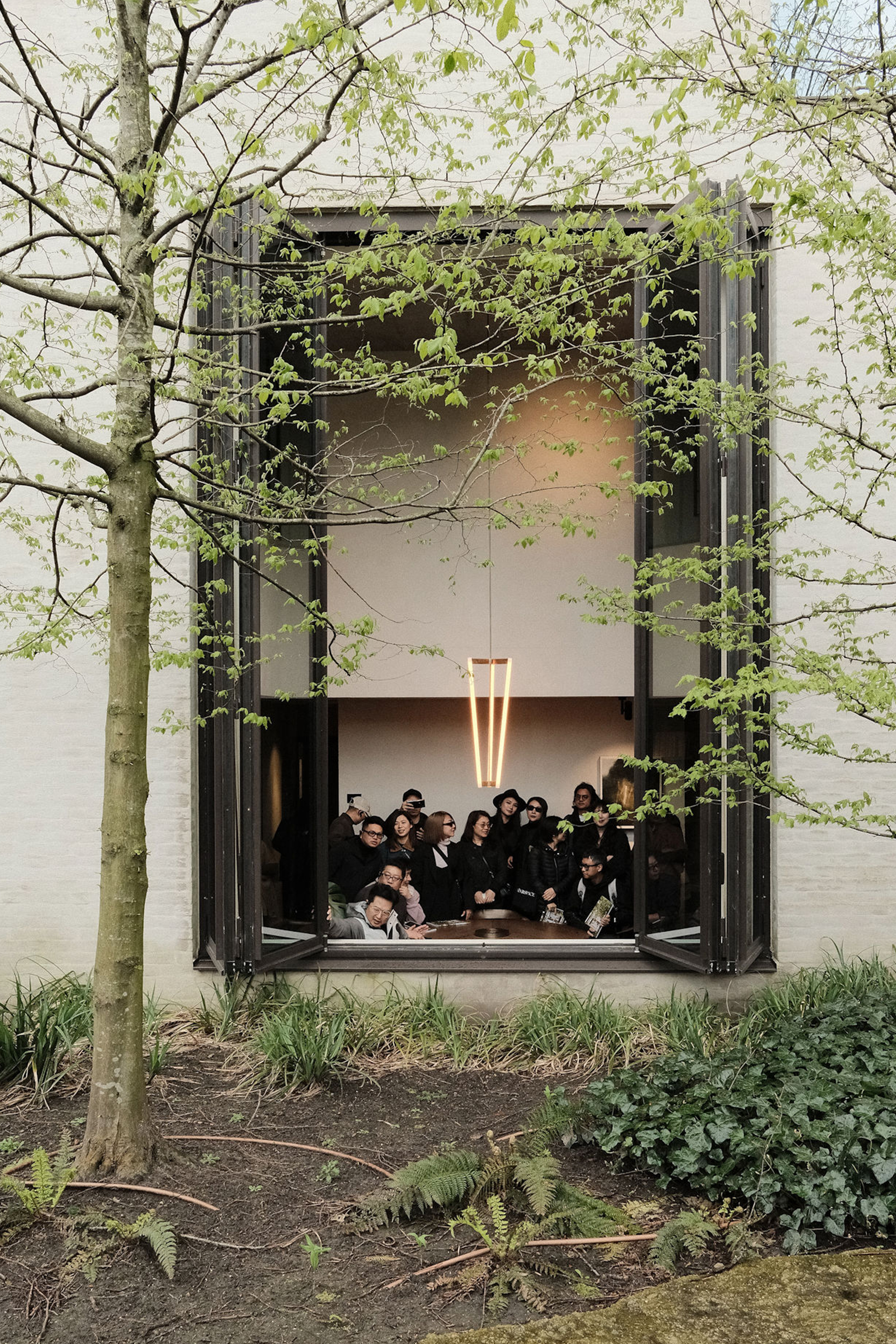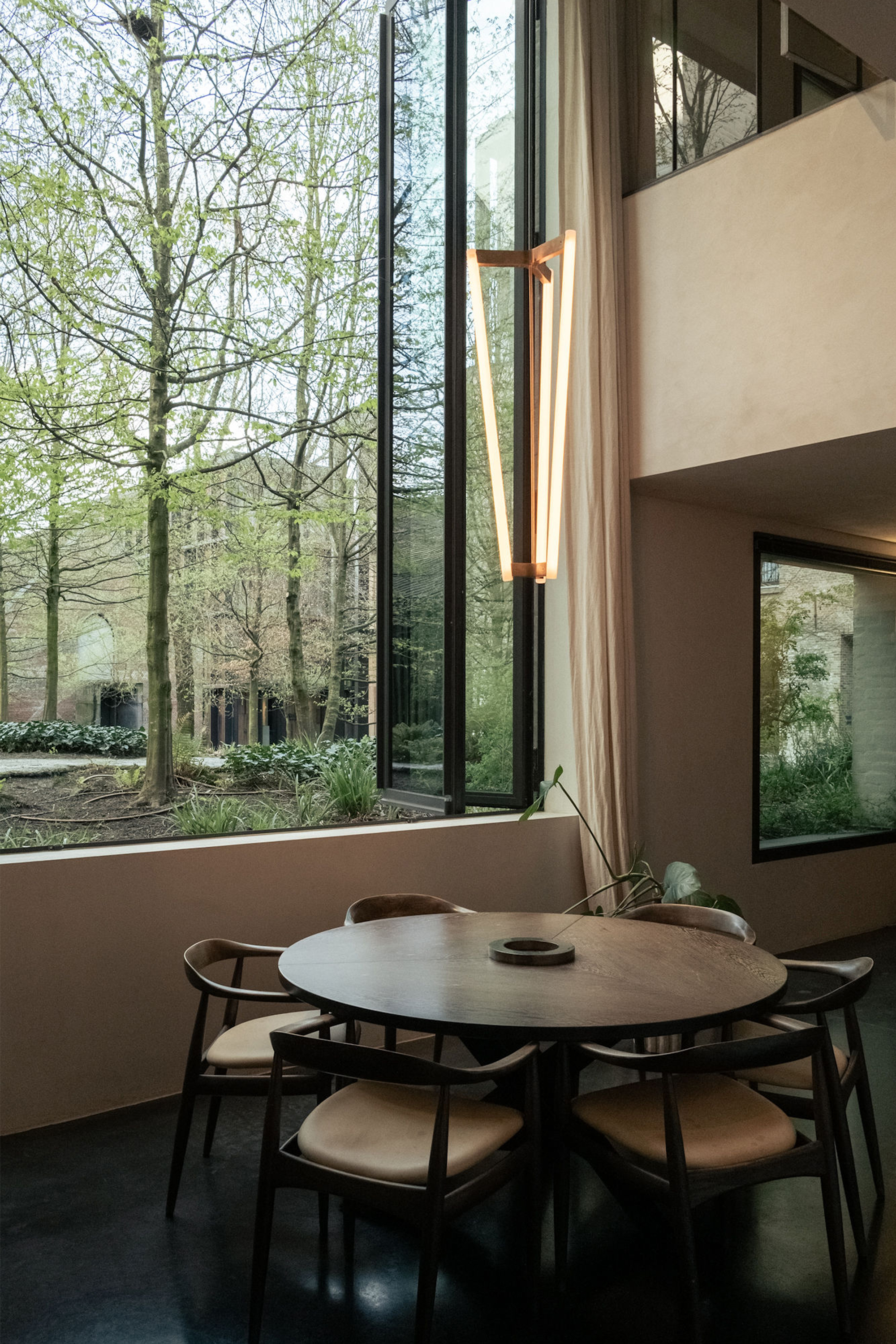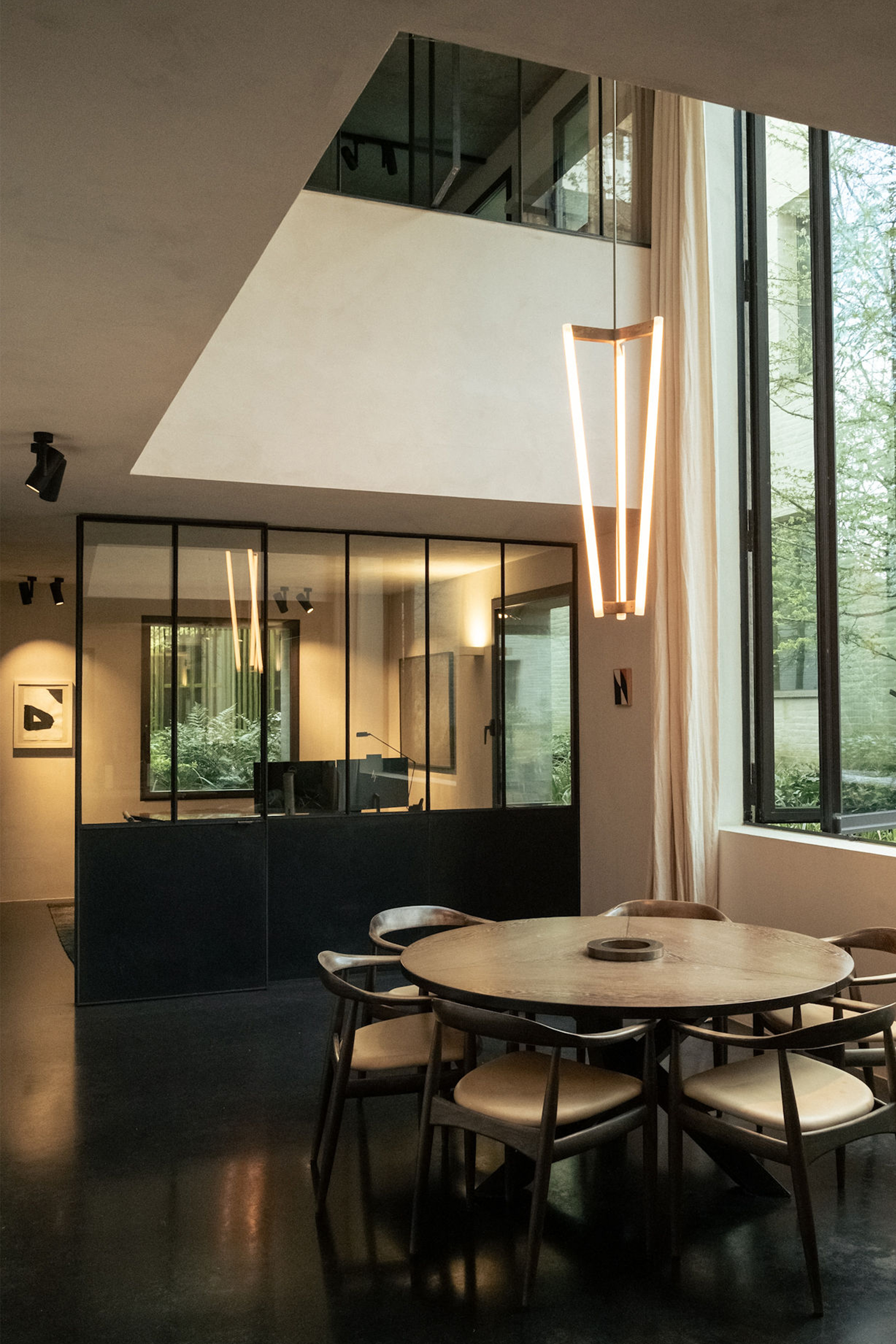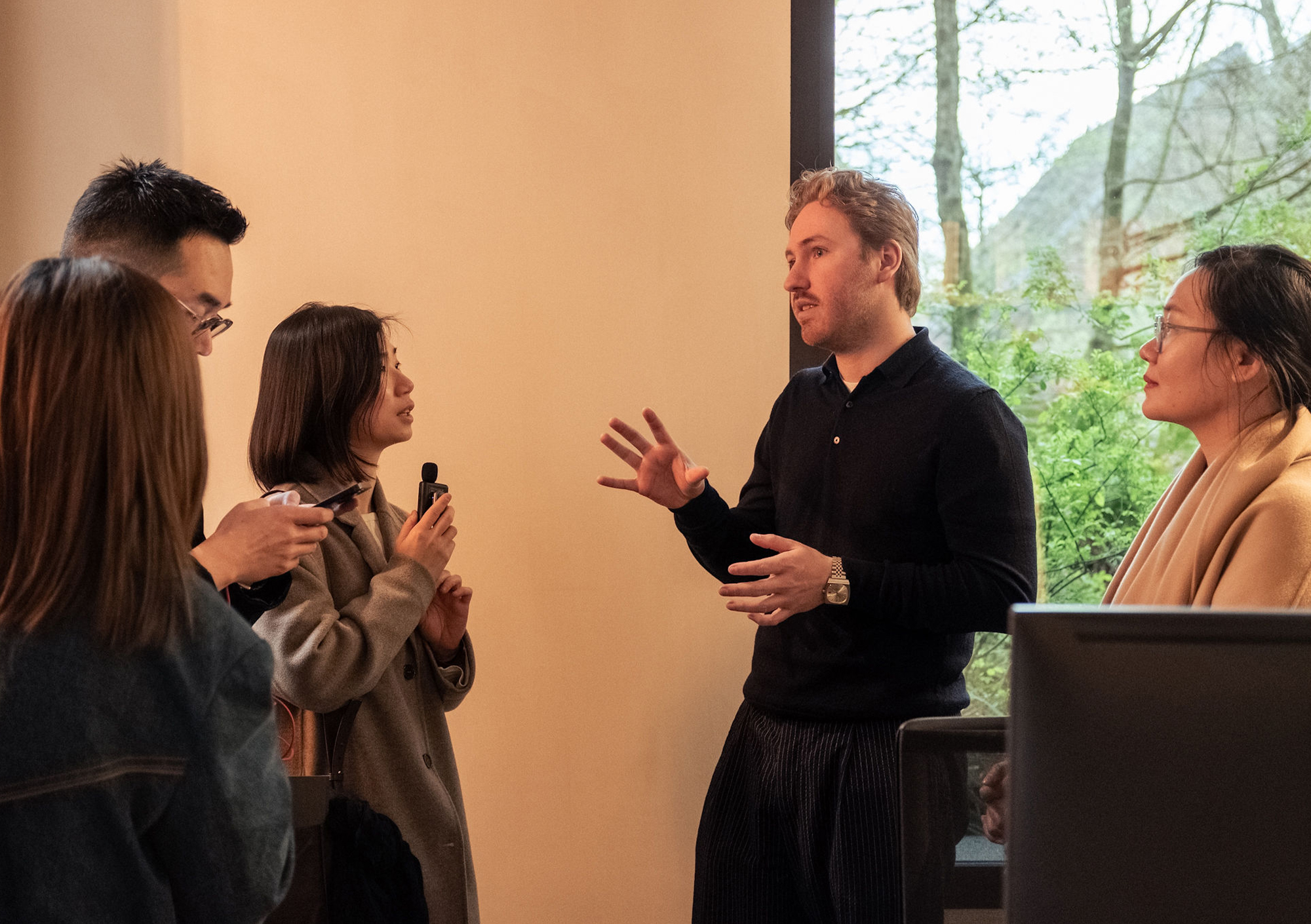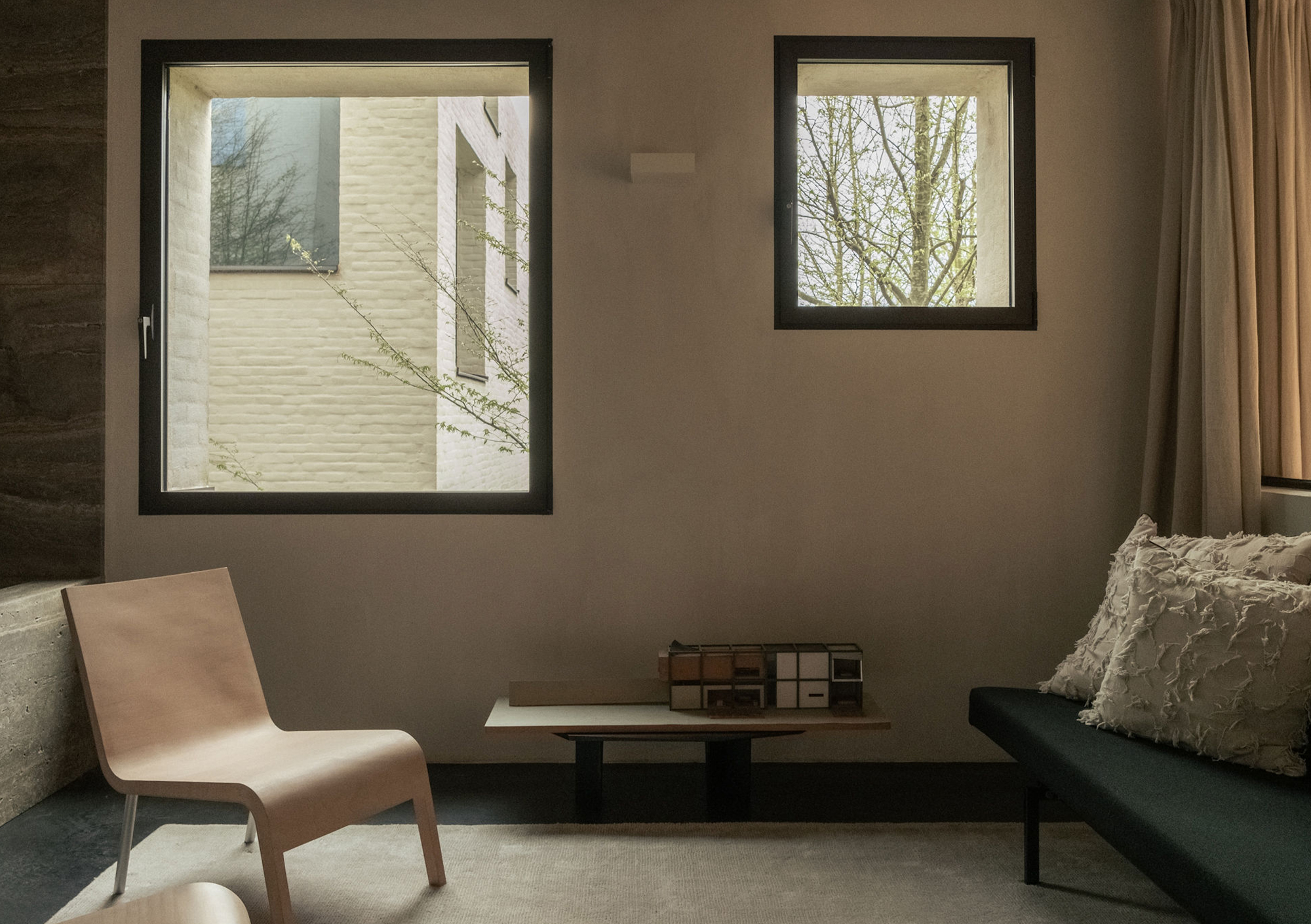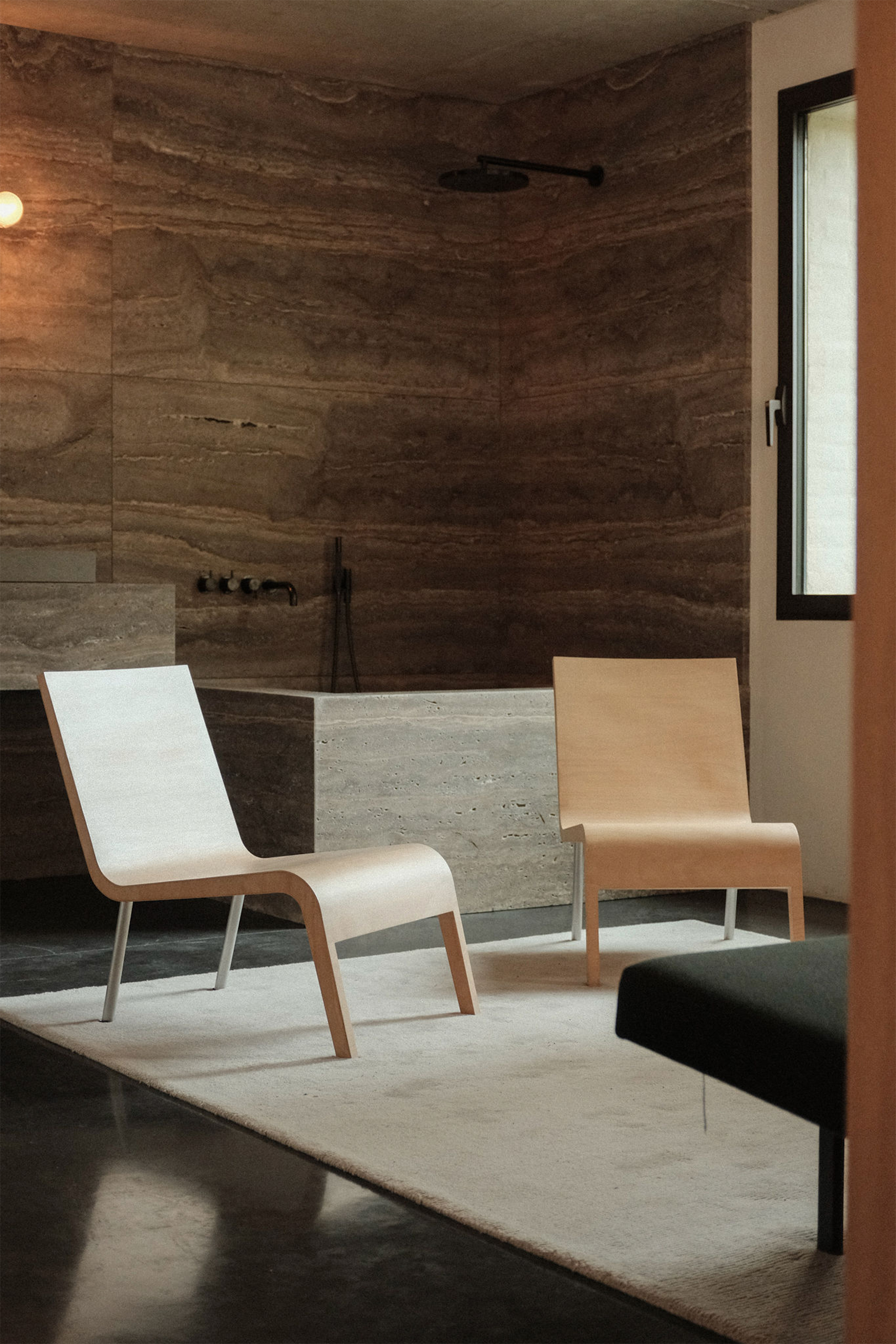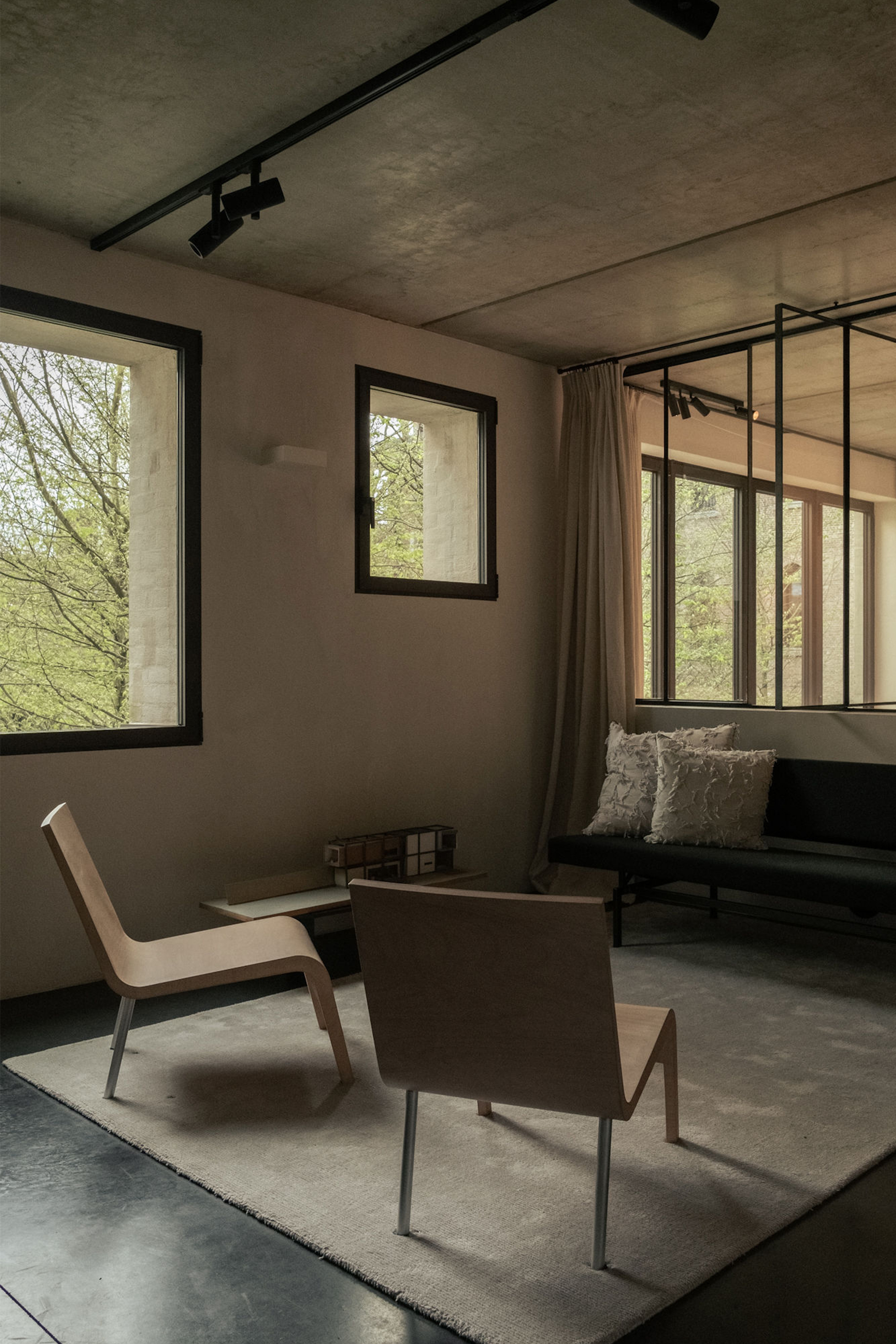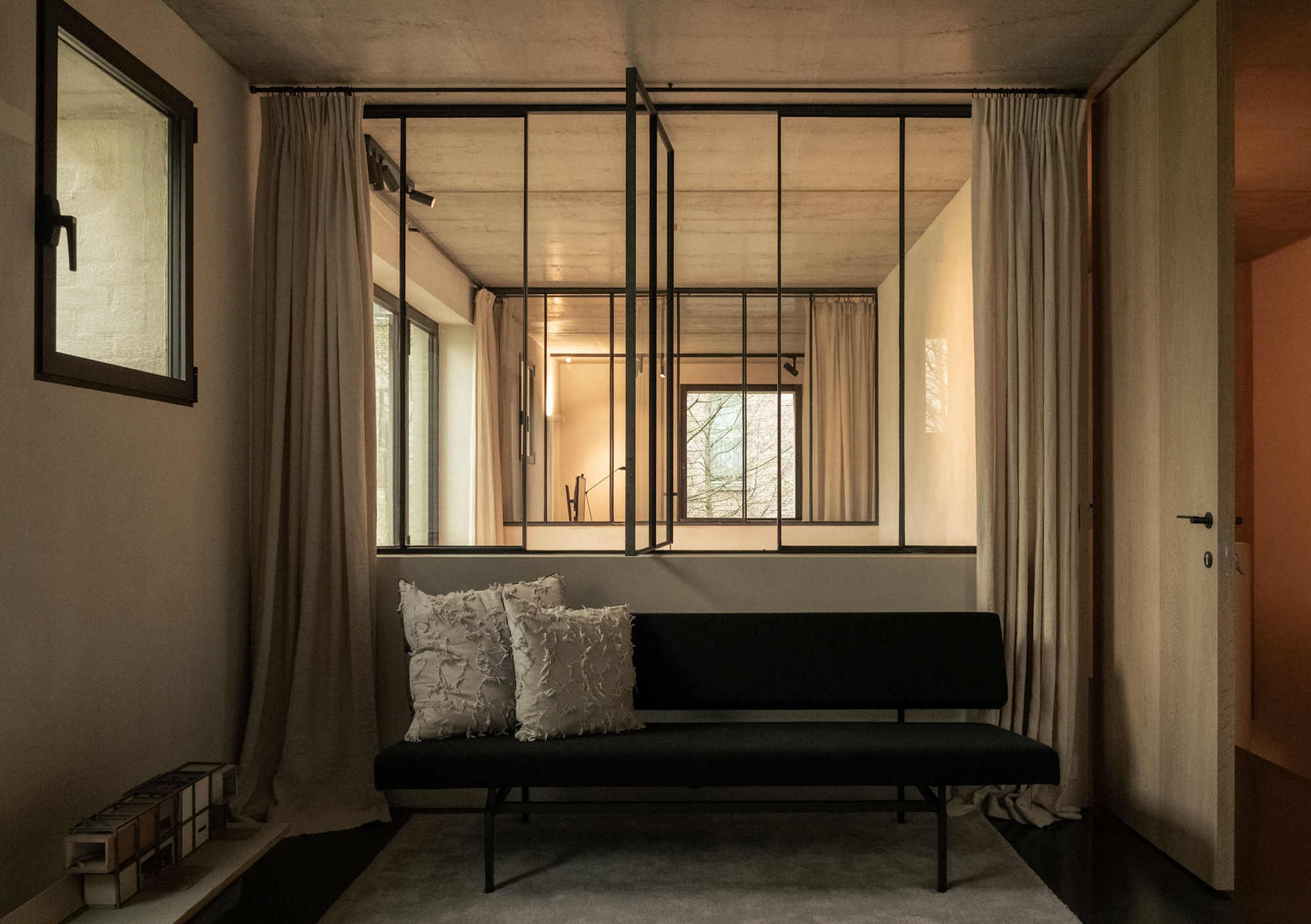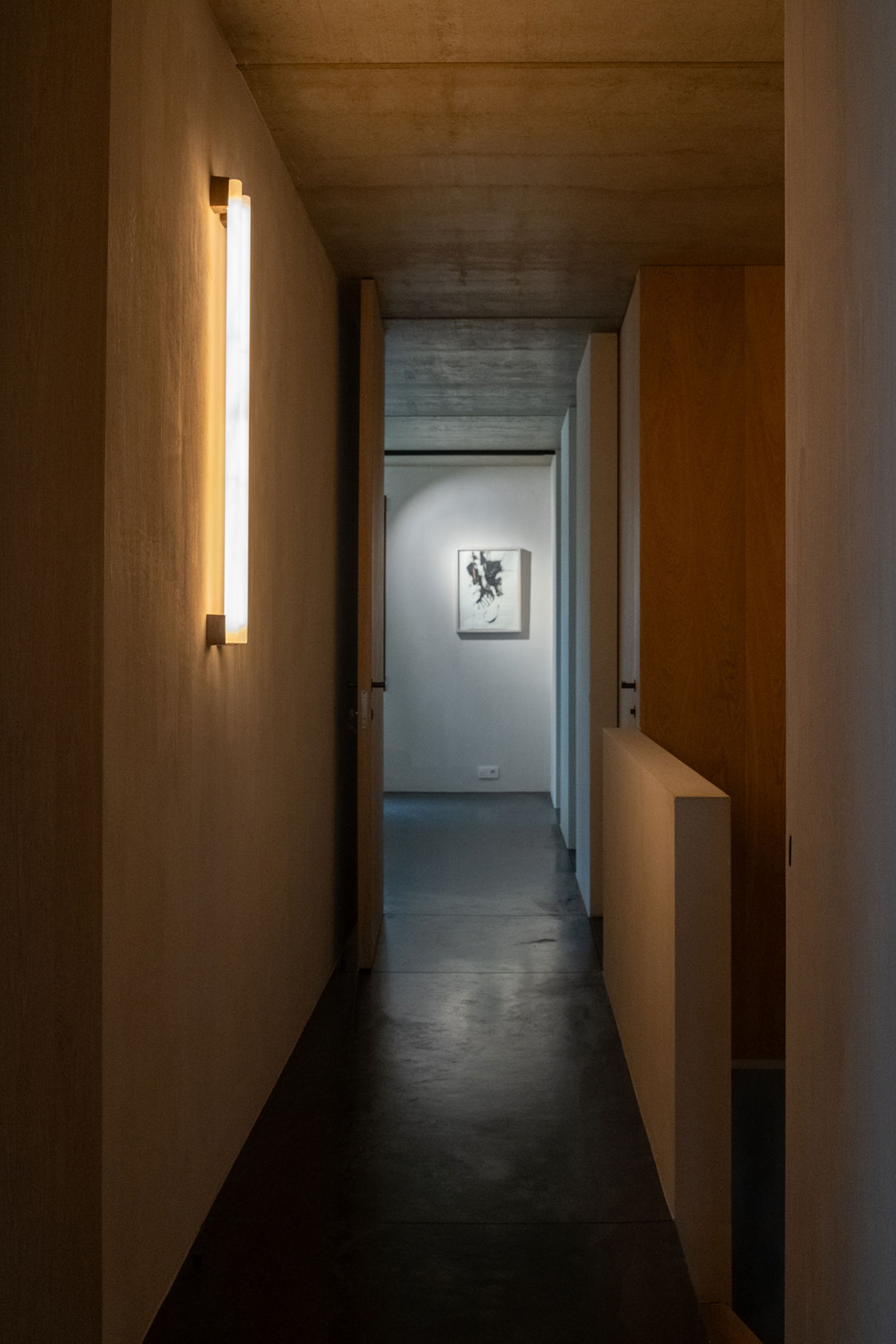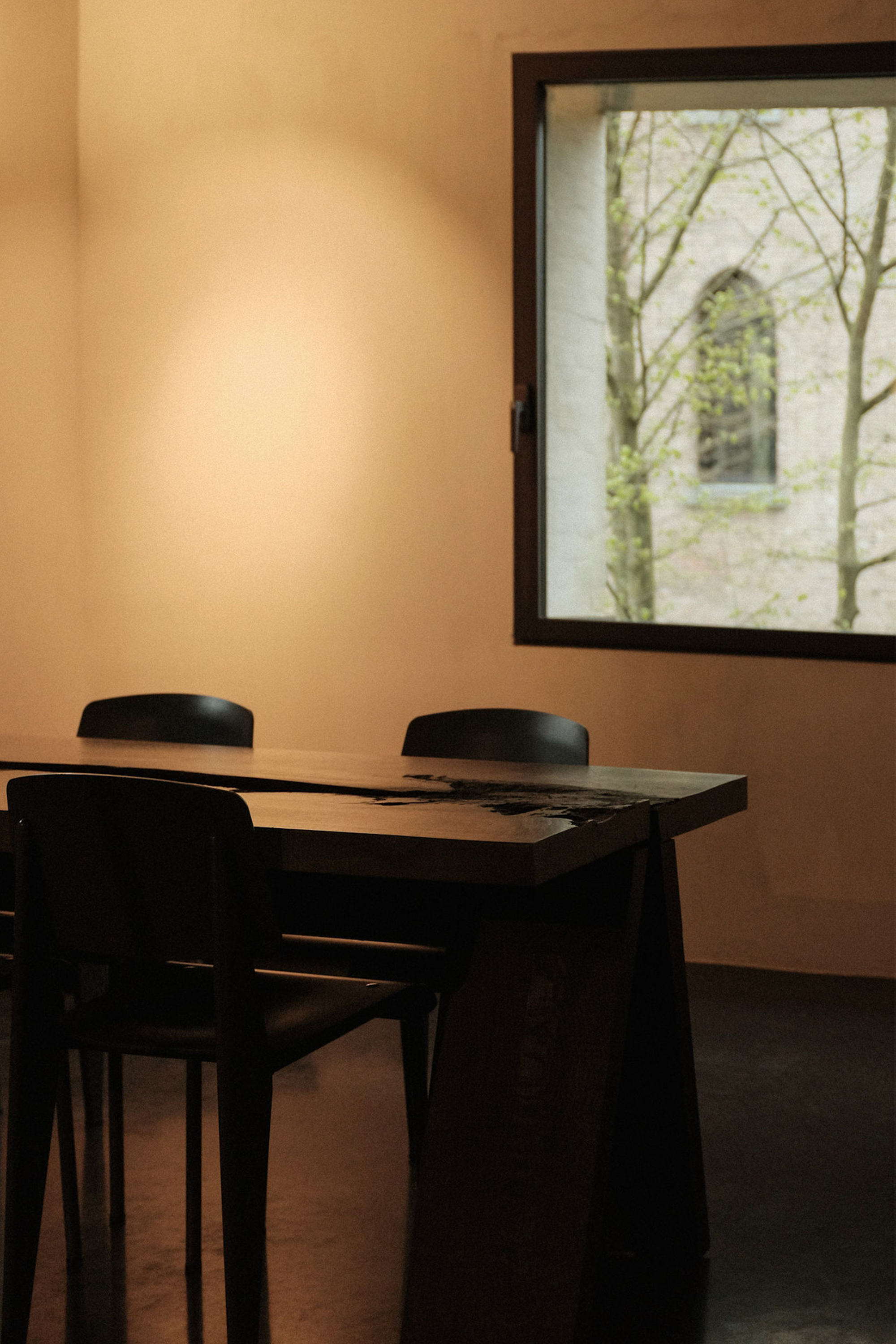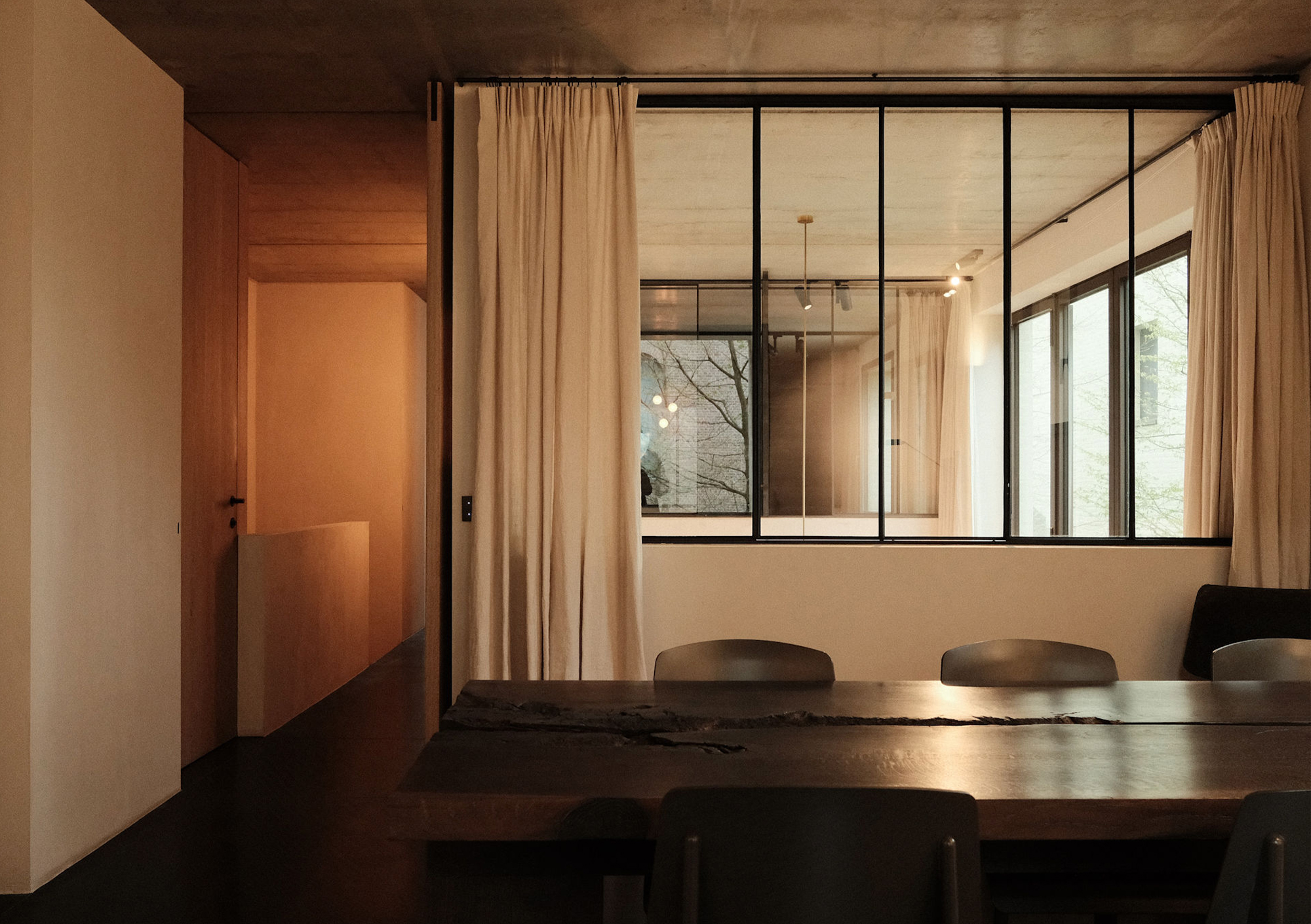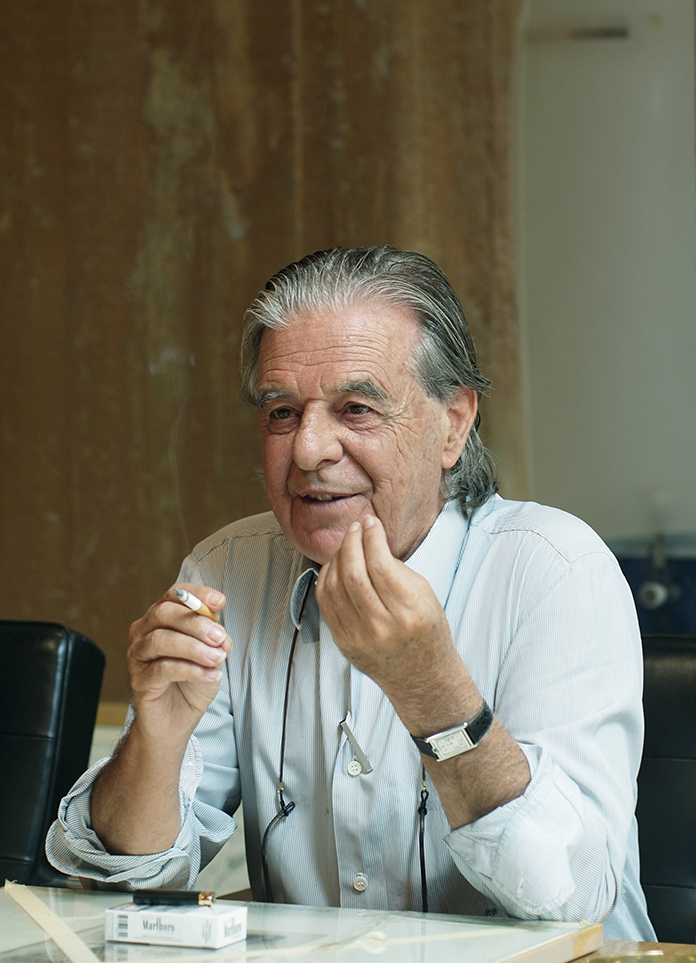Arriving at Kanaal, a symbol of industrial heritage and creative rejuvenation, we found ourselves standing before a tale of reinvention. What began as a modest apartment has since evolved into the bustling heart of Arjaan De Feyter's esteemed design bureau. Intrigued by the fusion of history and innovation, we stepped inside, eager to explore the creative depths that define this space. Our guide, Bob, a passionate designer and colleague of Arjaan, led us on a journey through the studio's history.
Arjaan De Feyter, an accomplished Interior Architect, graduated from the Antwerp Henry Van de Velde Institute in 1999. He started his own design bureau virtually immediately afterwards, combining this. Since 2006 he also holds a teaching position in Interior Design at the Department for Architectural Sciences at the University of Antwerp.Specializing in bespoke concepts tailored to individual needs, his portfolio spans private residences, commercial spaces, and art installations, each bearing the hallmark of quiet minimalism. In 2016, the bureau found a permanent location within the historic Kanaal complex, where Arjaan De Feyter has since left his mark with a series of remarkable projects, ranging from silo apartments to transformative office spaces.




